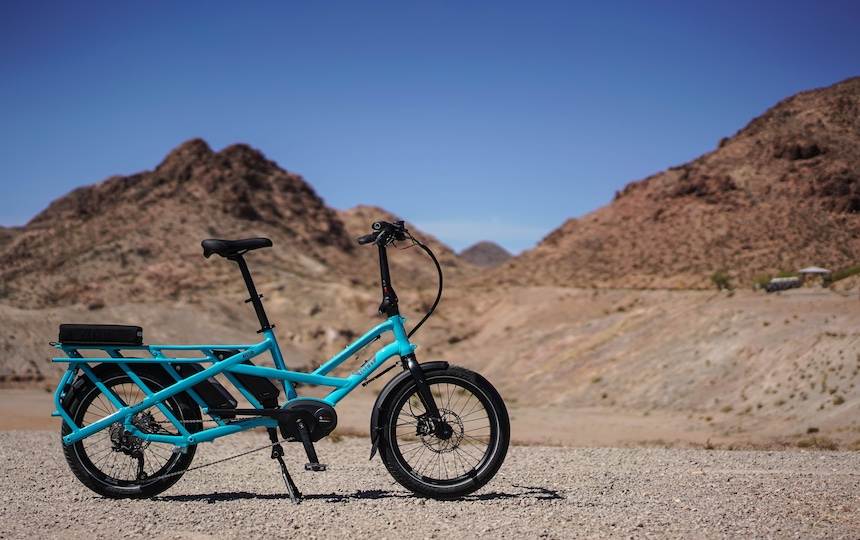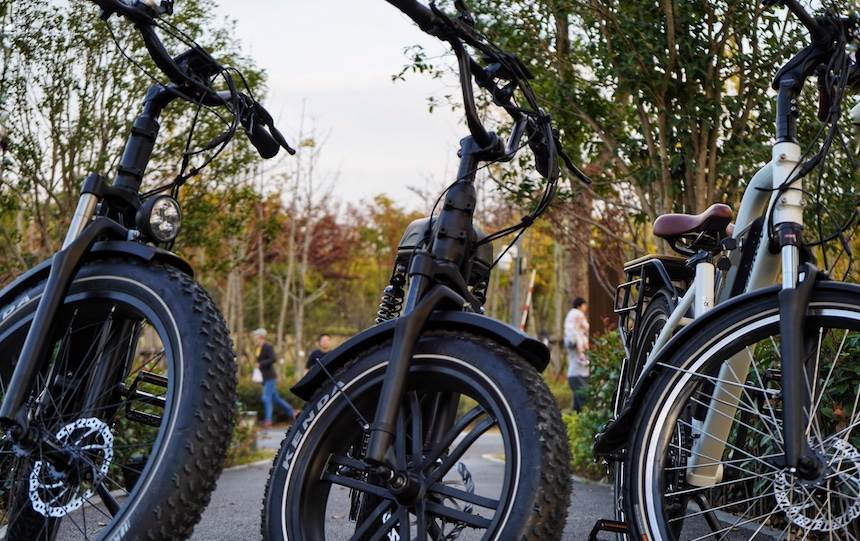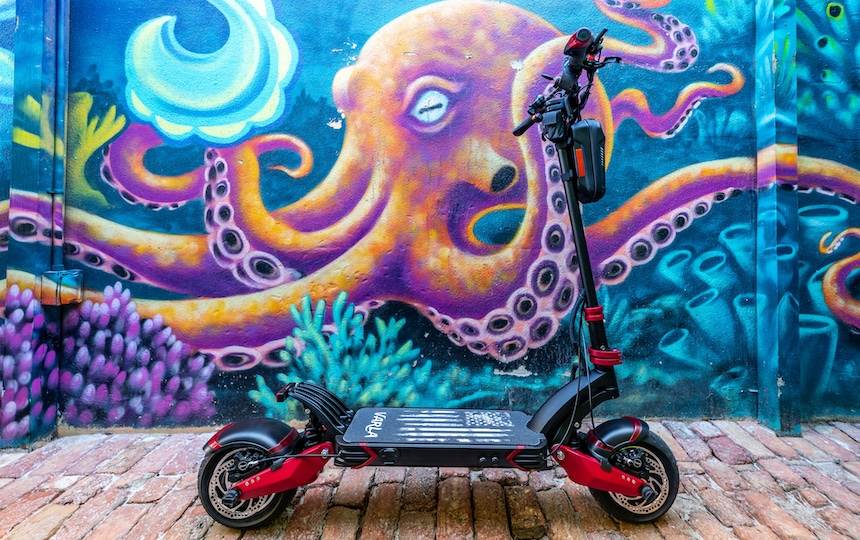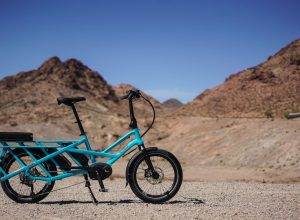Thinking of investing in an electric bike? Here’s everything you need to know before taking the plunge.
Greenhouse gas emissions from transport have recorded the highest rate of growth of any sector in the last 30 years.
The key to changing the projected trajectory, which forecasts continued growth through to 2030, is about finding cleaner transport solutions, and looking at how we move around and ways we can reduce our reliance on larger vehicles is an important strategy for reducing emissions.
In an era where many of us are looking to move away from public transport, adopting electric-drivetrain technology in an electric bike, motorcycle or scooter is a low-impact solution to reducing greenhouse gases.
The adaptation of electric motors into bicycles now means you don’t have to compromise on the distance you need to cover as much as you once would have, making an electric bike a viable commuting option.
The benefits of an electric bike
The popularity of electric-assisted bicycles – or eBikes – has grown exponentially in the last decade as more and more people make the switch to cleaner and healthier transport options.
Electric bikes aren’t self-propelled in the same way as an electric motorcycle or scooter is, instead they provide electric assistance relative to the amount of pressure being applied to the pedals by the rider.
Self-propelled versions which are operated by a throttle are available, however their power outputs and top speeds need to be capped in order to avoid motor-vehicle classification and subsequent licensing requirements.
There are still standards which pedal-assist bikes are required to adhere to for the same reasons and, while they vary slightly between states and territories, power output is restricted while motors are speed limited to 25 km/h.
Options range from road bikes and mountain bikes through to urban commuters and cargo bikes, with motors either fitted to the crank (the point which your pedals turn) or the rear hub (the centre of the rear wheel). Actuated
by a controller, most electric bikes offer riders the ability to switch between modes, which modulate the level of assistance and, in turn, battery life.
Each option and setup will vary enormously in price depending on the size of the battery, the motor’s output and the controller specification, not to mention the componentry used on the bicycle.
How an eBike works
The relative cost of an electric bike compared to a conventional bicycle is far higher than that of their four-wheel counterparts. To understand why, we need to consider the increased forces an eBike is subjected to compared to a standard pedal-powered pushbike.
The increased acceleration, braking and cornering forces an eBike needs to endure requires a stronger, more rigid frame, as well as improved brakes, wheels and running gear due to the higher performance capabilities. Compare this to a car, and there’s very little difference in base performance of the vehicle depending on its drivetrain.
And while there’s plenty of aftermarket conversion kits available to turn your pedal-powered bicycle into one assisted by an electric motor, it’s important to understand you may be pushing the bicycle outside of its design limits, while voiding warranty at the same time.
While many people have successfully retrofitted a motor, battery and controller to a bicycle, others have complained of the lower quality of the aftermarket components and lack of warranty support. If you’re considering this option, do some thorough research and weigh up the short-term savings compared to your long-term goals.
Other options: Motorcycles and scooters
The licensing requirements for electric-powered motorcycles and scooters present a hurdle in terms of effortless adoption, but the strides the sector is taking in removing some of the negativities associated with electric- powered transport makes them a really appealing option.
Unlike a car, for example, which uses extremely large and heavy batteries to achieve a range which meets market expectations, powered two-wheelers use much smaller batteries which, in some cases, can be removed and charged independently of the vehicle. This negates the need to find parking near a power outlet by allowing the user to charge the battery during the evening or workday.
As well as being far more affordable than a four- wheeled electric vehicle, a lot of bikes, though not all, are charged via a standard wall plug, rather than the specialised charging point required for cars.
But it gets better, because in May this year, four large and competing motorcycle manufacturers begin working within the recently formed Swappable Batteries Consortium for Motorcycles and light Electric Vehicles.
Aimed at the standardisation of batteries used in motorcycles and scooters, the swappable system will not only remove the need to factor in the time required to recharge a battery, but it means your battery will never get “old” because it’s being replaced by a different and fully-charged version.
By extending range, shortening charging times and lowering vehicle and infrastructure costs, the consortium addresses many concerns which could otherwise turn commuters away from affordable emission-free transport.
Weighing up the benefits of electric bikes and other modes of sustainable transport
If an electric-powered vehicle is on your radar as a way of reducing your contribution to greenhouse gas emissions, there’s a few things to consider when working out which is the best option.
You need to first work out if your goal is to be 100 percent emission free, or if it’s more realistic to introduce an electric bike or scooter which can replace the majority of your transport needs, until such time the technology and price parity is at a level that you’re both willing and able to replace the petrol-powered car.
You need to take stock of how far you travel each day, where your vehicle will be parked and work out your travelling-to-parking ratio so you can make educated decisions about the range you realistically require. Most sectors will offer short- and long-range battery options which will vary in price.
Much like the energy star rating applied to whitegoods, the industry has a standardised NEDC rating to inform consumers of the vehicle’s energy consumption. It typically overstates range though, so is more effective as a comparative measure rather than to rate an individual vehicle’s performance.
Winning an eBike…?
If you are as keen as us to help pave the way for a more sustainable future, then subscribing to Pip will give you all the tools you need to do so – like learning how to reduce waste, grow food, make compost, forage, preserve harvest, save seeds, keep bees and chooks, build eco-homes, make your own clothes and so much more!
Subscribe now to go into the draw to WIN a Leitner Venice Cruiser e-bike valued at $1,325! Reduce your emissions, save money on petrol and improve your health and wellbeing with Leitner’s Venice Cruiser e-bike. With a low-step frame and sturdy rear rack, it’s practical and easy to use, while puncture-resistant tyres, quality Samsung battery cells and a powerful hub motor means you’ll conquer hills with ease. (Offer open to Australian residents only.)
Pip Magazine is published four times per year.
Subscribe to Pip‘s print edition here.
Subscribe to Pip‘s digital edition here.
To find your nearest stockist click here.














